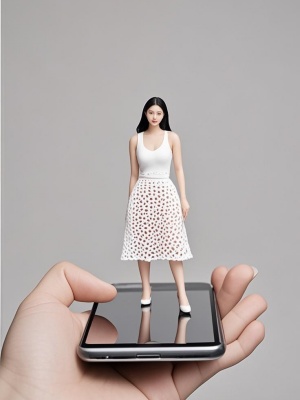Animal Pop Art: A Vibrant Fusion of Wildlife and Contemporary Culture
Introduction: The Wild Side of Pop Art
Animal pop art represents one of the most dynamic intersections between nature and contemporary culture. This artistic movement transforms ordinary animal imagery into bold, colorful statements that challenge traditional perceptions of wildlife representation. From Andy Warhol's iconic Endangered Species series to modern digital interpretations, animal pop art continues to evolve with new technologies and cultural influences.
At MediaAI's gallery, you can explore how artificial intelligence is revolutionizing this artistic genre, creating stunning animal pop art pieces that blend classic techniques with cutting-edge technology.
The Evolution of Animal Pop Art
From Traditional to Digital
The journey of animal pop art began with traditional mediums but has dramatically transformed in the digital age. Early pioneers used silkscreen printing and acrylic paints to create repetitive animal motifs, while today's artists leverage AI-powered tools to generate unlimited variations of animal portraits.
Key milestones in animal pop art evolution include:
- 1960s-70s: Warhol's Endangered Species series brings animal conservation into pop art
- 1990s: Digital tools enable more complex animal compositions
- 2010s: AI algorithms begin generating animal pop art autonomously
- Present: Hybrid human-AI collaborations dominate the scene
Cultural Impact and Significance
Animal pop art serves multiple purposes in contemporary society. It raises awareness about endangered species, challenges our relationship with nature, and provides a playful reinterpretation of wildlife. The bold colors and graphic styles characteristic of pop art make animal subjects more accessible and engaging to modern audiences.
Creating Animal Pop Art: Techniques and Tools
Traditional Methods
Traditional animal pop art creation involves several distinctive techniques:
- Silkscreen printing for mass reproduction
- Bold color blocking with acrylic paints
- High-contrast photography as source material
- Graphic simplification of animal features
AI-Powered Creation
Modern artists now utilize tools like those featured in MediaAI's AI Art Guide to create animal pop art. These AI solutions offer:
- Style transfer algorithms that apply pop art filters to animal photos
- Generative adversarial networks (GANs) that create original animal pop art
- Color palette suggestions based on classic pop art schemes
- Automated composition tools for balanced designs
Animal Pop Art in Commercial Applications

The vibrant appeal of animal pop art has made it popular across various industries:
Home Decor
From canvas prints to wallpaper designs, animal pop art brings energy to living spaces. The bold colors and recognizable subjects make these pieces ideal for statement walls.
Fashion and Apparel
Designers frequently incorporate animal pop art motifs into clothing lines, creating wearable art that makes ecological statements.
Advertising and Branding
Companies use animal pop art in campaigns to convey messages about conservation, energy, or brand personality. The style's immediate visual impact makes it effective for marketing.
The Future of Animal Pop Art
As technology advances, animal pop art continues to evolve in exciting directions:
Interactive Experiences
Augmented reality (AR) allows viewers to engage with animal pop art in new ways, seeing animations or conservation messages when scanning artworks with smartphones.
NFTs and Digital Ownership
The rise of blockchain technology has created new markets for digital animal pop art, with collectors purchasing unique AI-generated pieces as NFTs.
Environmental Activism
Contemporary artists increasingly use animal pop art to highlight climate change and species extinction, as discussed in MediaAI's painting guides.
Conclusion: The Enduring Appeal of Animal Pop Art
Animal pop art remains one of the most accessible and impactful art forms, bridging the gap between nature appreciation and urban culture. Whether created through traditional methods or AI-assisted techniques, these vibrant representations of wildlife continue to captivate audiences worldwide.
As we look to the future, animal pop art will undoubtedly continue to evolve, incorporating new technologies while maintaining its core mission: to make us see the animal kingdom through fresh, colorful lenses. For those interested in creating their own animal pop art, exploring Tate's resources on pop art provides excellent historical context, while MediaAI's platform offers cutting-edge creation tools.